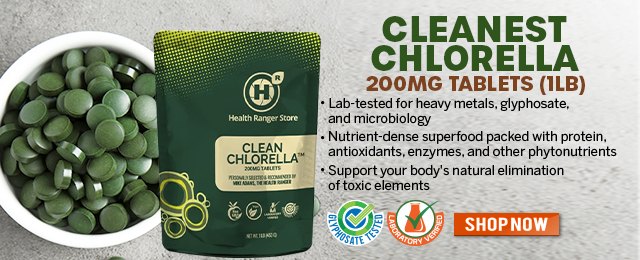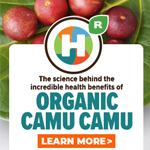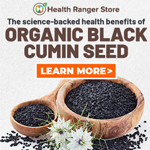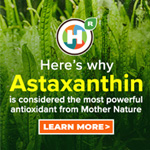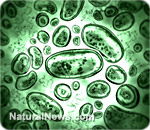
Obsession with killing microorganisms is dangerous for humans and planet, scientist warns
Wednesday, November 17, 2010 by: S. L. Baker, features writer
Tags: microorganisms, medical myths, health news
- Criminal referral requests filed against Fauci and top COVID officials in seven states
- Aluminum, essential to vaccine science, also causes serious health conditions, including chronic fatigue, neurodegenerative diseases, macrophagic myofasciitis
- DOGE unveils $400M unemployment fraud scandal: Toddlers, futuristic birthdates fuel outcry
- Gardening tips: 15 Simple tricks to double your garden’s yield this season
- Oats: A nutritional powerhouse for health and wellness
- TAKE IT DOWN Act advances in Congress amid free speech concerns
- Survival 101: Dangerous places to avoid when disaster strikes
- Nature’s arsenal: How plant compounds power military survival and healthcare in crisis
- Kawasaki unveils rideable ROBOT HORSE powered by hydrogen
- A turning point in American economic history: “The Origins of the Federal Reserve” by Murray N. Rothbard
- Amazon's Kuiper satellite launch delay highlights uphill battle against Musk's Starlink
- DOJ and ATF kill Biden’s “Zero Tolerance” firearms dealer policy
- U.S.-funded "anti-misinformation" groups persist, raising concerns over censorship and bias
- “Prepare Tribe: Prepare, Protect, Provide” on BrightU: How to build a disaster-proof shelter in the middle of nowhere
- Tesla halts U.S.-made Model S and X orders in China amid escalating trade war
- Trump to impose major tariffs on foreign-made pharmaceuticals
- Barley: A nutrient-dense ancient grain with modern benefits
- “Prepare Tribe: Prepare, Protect, Provide” on BrightU: Protecting heirloom crops from corporate extinction
- Tulsi Gabbard leads charge against the Biden regime’s global censorship of the 'Disinformation Dozen'
- Fauci is back in the limelight, and he’s busy promoting a future COVID or FLU pandemic
- Aerosolized bioweapons? Strange “diploid biomasses” falling out of the sky in Florida captured under the microscope
- Analysis: The coming economic collapse, a mass uprising and Trump's three secret weapons to halt the growing revolt
- Widespread social and economic unrest: Steve Quayle issues urgent financial warning of imminent asset collapse in new interview with Mike Adams
- Kiss Your Genetic Privacy Good-Bye! 23andMe Gets Green Light to Sell Your Intimate Genetic Details to Anyone They Want
- Tulsi Gabbard takes aim at censorship: Justice for the ‘Disinformation Dozen’
- Mike Adams releases country western hit single: Goin’ Back in Time is Comin’ Home
- U.S. lawmakers investigate Meta over alleged China collaboration
- CLOT SHOT PLANDEMIC UNFOLDING: Fibrous, rubbery clots caused by covid injections have prion-like seeding activity
- Chemtrails unveiled: How the CIA and Big Business are manipulating the weather for profit
- How Israeli military-connected corporations are secretly controlling your online privacy
- European Court of Justice: Healthcare professionals who promoted or administered COVID-19 vaccines are CRIMINALLY LIABLE for any harm caused
- DEATH by VACCINE or face PRISON time: Canadian Freedom Convoy leaders CONVICTED for protesting forced vaccination during the Covid Plandemic
- Defunding DEADLY mRNA jabs: Government funding for mRNA technology being scrutinized and sidelined until proven "safe and effective" for real
- Federal employees whine over DOGE's new directive requiring them to do a 5-point summary of weekly accomplishments
- U.S. approves new Russian ambassador as diplomatic thaw continues
- Curcumin’s ancient healing power supercharges muscle recovery, and its effects are compounded with anti-inflammatory foods and supplements
- Newly released JFK files reveal Pentagon's role in creating Lyme disease and covid in the same lab
- Analysis: The coming economic collapse, a mass uprising and Trump's three secret weapons to halt the growing revolt
- Mike Adams releases country western hit single: Goin’ Back in Time is Comin’ Home
- Aerosolized bioweapons? Strange “diploid biomasses” falling out of the sky in Florida captured under the microscope
- Kiss Your Genetic Privacy Good-Bye! 23andMe Gets Green Light to Sell Your Intimate Genetic Details to Anyone They Want
- Dr. Mike Yeadon releases 15-minute testimony - WATCH - about genocidal intent of COVID “vaccines”
- Trump reverses course on Gaza plan, says “nobody is expelling Palestinians”
- MEDICAL BOMBSHELL: FDA admits Covid mRNA 'Vaccines' CAUSE CANCER
- European Court of Justice: Healthcare professionals who promoted or administered COVID-19 vaccines are CRIMINALLY LIABLE for any harm caused
- The Health Ranger releases “Vaccine Zombie” song and music video, using AI-animated zombies for the music video
- 5 Simple steps to boost your brainpower: How to strengthen executive function in a distracted world
- A lack of integrity in Academia: Harvard professor found GUILTY of fraudulent research to promote CRT theory
- Federal employees whine over DOGE's new directive requiring them to do a 5-point summary of weekly accomplishments
- EPA advisor admits the agency is funneling billions to climate groups ahead of Trump’s return to White House
- California's social media censorship law struck down: A victory for free speech or a threat to online safety?
- Space war brewing? Russia threatens to destroy Starlink satellites
- Survival 101: Effective EMF blocking techniques
- Rep. Nancy Mace introduces bill to ban biological males from female facilities on federal property
- Red Cross issues warning to stop blood plasma donations from vaccinated people
- Scientists confirm: GENIUS brain function can be spontaneously unleashed in humans without any apparent cause
- EPA advisor admits the agency is funneling billions to climate groups ahead of Trump’s return to White House
- HYSSOP: What research reveals about the health benefits of this ancient holy herb
- Two containers with completed ballots fall out of truck in Florida
- Newly released JFK files reveal Pentagon's role in creating Lyme disease and covid in the same lab
- Global leaders unite to clamp down on “misinformation” with UN-backed Cascais Declaration
- BREAKING: 2025 NDAA authorizes mandatory military draft of WOMEN across America… as Pentagon pursues global NUCLEAR war with both Russia and China at the same time
- Michael Yon warns of a ZIONIST TAKEOVER in Trump’s second administration
- Ozempic and Wegovy weight loss drugs are injectable LIZARD VENOM PEPTIDES that may unleash a devastating wave of organ failure… side effects align with symptoms of SNAKE BITES
- The Health Ranger releases “Vaccine Zombie” song and music video, using AI-animated zombies for the music video
- Mike Adams releases country western hit single: Goin’ Back in Time is Comin’ Home
- BOMBSHELL: DNA testing kits are a SCAM to develop ethnic-specific bioweapons
- Israeli soldiers accused of even more torture and abuse in the West Bank
- These 13 countries just signed an agreement to engineer a global FAMINE by destroying food supply
- NASA admits that climate change occurs because of changes in Earth’s solar orbit, and NOT because of SUVs and fossil fuels
- Fully vaccinated about to see “tsunami” of illness and death, warns virologist
- RFK Jr. clears key hurdle: Sen. Susan Collins backs controversial HHS nominee, signaling a new era for health policy
The two most popular antimicrobial compounds, triclosan and triclocarban, are now a billion dollar a year industry and are found in a host of personal care products. Triclosan is added to plastic containers, toys and even clothing, too. First patented in l964 to kill germs before surgical procedures, the compound was pushed on consumers in the l980s when antimicrobials were hyped through massive marketing campaigns for "anti-germ" hand soaps. By 2001, a whopping 76 percent of all liquid soaps contained the chemical.
The trouble is, Halden pointed out in a press statement, these chemicals persist in the environment and in your body. Levels of triclosan in humans have soared by about 50 percent since 2004, according to newly updated data from the Centers for Disease Control and Prevention (CDC). And both triclosan and triclocarban are present in 60 percent of all rivers and streams nationwide.
And here's additional shocking news about the accumulation of these chemicals: antimicrobial chemicals now regularly show up in household dust where they may act as allergens. What's more, 97 percent of all U.S. women show detectable levels of triclosan in their breast milk.
So what are the exact health risks from these unnecessary chemical exposures? No one knows for sure. However, both triclosan and triclocarban have been linked to endocrine disruption, with potentially serious negative impacts on sexual and neurological development. Moreover, as these antimicrobial chemicals accumulate in the environment, they are interacting with microorganisms exposed to them and that increases the likelihood that a superbug will develop from this mix. Ironically, such an infectious agent would be resistant to the very antimicrobials developed to kill disease-causing germs -- and the consequences could be dire for human health.
While the EPA has claimed triclosan and triclocarban are eliminated from water during the treatment process, Halden noted that the EPA has come up with their "facts" from chemical industry-funded studies of wastewater treatment plant effluent. But these compounds, which contain benzene ring structures that have been chlorinated, are created in a way that is notoriously difficult to break down, according to Halden; the chemicals tend to stick to particles which decreases their availability for breakdown processes. That made Halden wonder if these compounds might actually still be present in the solid byproduct known as sewage sludge left over after wastewater treatment.
So his research group decided to test a large wastewater treatment plant serving 1.3 million people in the Mid Atlantic region of the U.S. in 2006. The scientists found that, indeed, the mass of triclocarban entering the wastewater treatment facility was simply moved from the water into the sludge. Additional tests have confirmed the accumulation of triclosan in sludge, too.
"We make 13 billion pounds of dry sludge per year," Halden said in a statement to the media. "That is equal to a railroad train filled with sludge stretching 750 miles from Phoenix to San Francisco."
And, unfortunately, about 50 percent of this sludge ends up on agricultural fields. The chemicals can then migrate into food or leach into groundwater. What's more, Halden pointed out it's likely that antimicrobials are capable of moving up the food chain, through a process known as biomagnification.
In recent studies published in Water Research and The Journal of Hazardous Materials, Halden and his research team documented that, based on a survey of 72 chemicals entering the wastewater treatment stream, triclosan and triclocarban account for two-thirds of the mass of all the antimicrobials in sludge. And massive bioaccumulation of these antimicrobial chemicals has now been documented in various species, including earthworms. A recent study found dolphins had accumulated triclosan in their bodies from contaminated coastal waters, too.
Halden noted the thresholds for killing microbes are much higher than those for life forms like algae, crustaceans and fish. "This explains why residual concentrations of antimicrobials found in aquatic environments are still sufficiently harmful to wipe out the small and sensitive crustaceans, which are critical to the aquatic life cycle and food web," Halden stated.
In 2005, the FDA asked an expert panel, which included Halden, to review all the available information on these chemicals. Their conclusion? Regular use of antimicrobial products by the general public was no more effective against disease causing germs than simply washing thoroughly with regular soap and water.
"The culture of fear leads people to make impulsive decisions and buy a lot of antimicrobial products that are not really needed," Halden says. "It's a profitable market to be in, but not one that is ultimately sustainable or a good idea."
For more information:
http://asunews.asu.edu/20101112_antimicrobia...
Microorganisms at FETCH.news
Get independent news alerts on natural cures, food lab tests, cannabis medicine, science, robotics, drones, privacy and more.
Take Action: Support Natural News by linking to this article from your website
Permalink to this article:
Embed article link: (copy HTML code below):
Reprinting this article:
Non-commercial use OK, cite NaturalNews.com with clickable link.
Follow Natural News on Facebook, Twitter, Google Plus, and Pinterest
Science News & Studies
Medicine News and Information
Food News & Studies
Health News & Studies
Herbs News & Information
Pollution News & Studies
Cancer News & Studies
Climate News & Studies
Survival News & Information
Gear News & Information
News covering technology, stocks, hackers, and more



"Big Tech and mainstream media are constantly trying to silence the independent voices that dare to bring you the truth about toxic food ingredients, dangerous medications and the failed, fraudulent science of the profit-driven medical establishment.
Email is one of the best ways to make sure you stay informed, without the censorship of the tech giants (Google, Apple, Facebook, Twitter, YouTube, etc.). Stay informed and you'll even likely learn information that may help save your own life."
–The Health Ranger, Mike Adams












